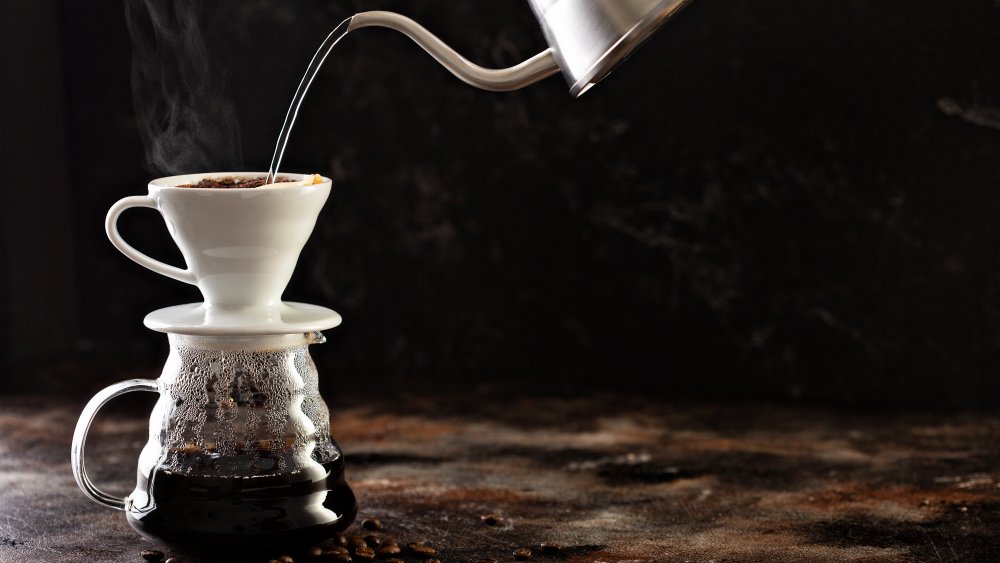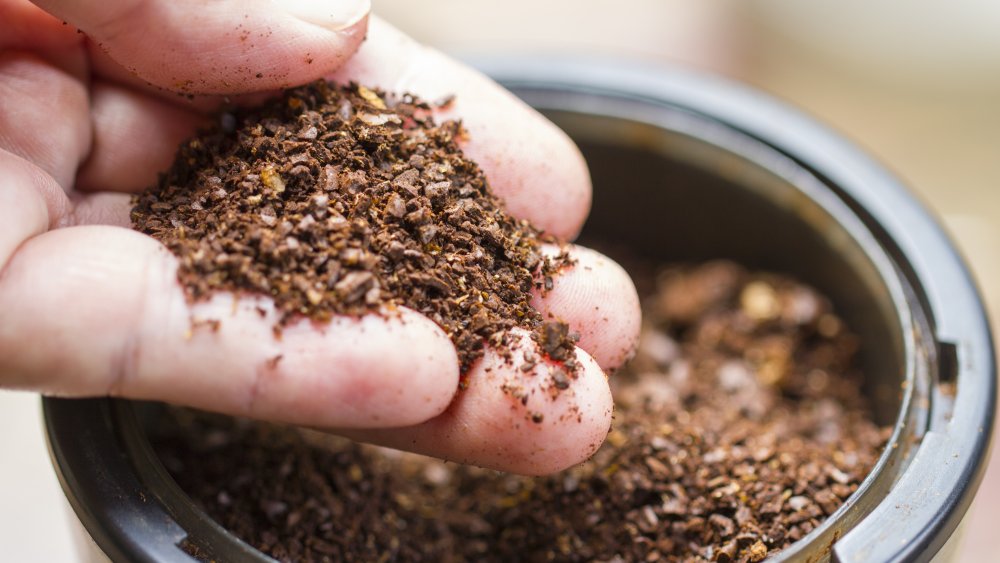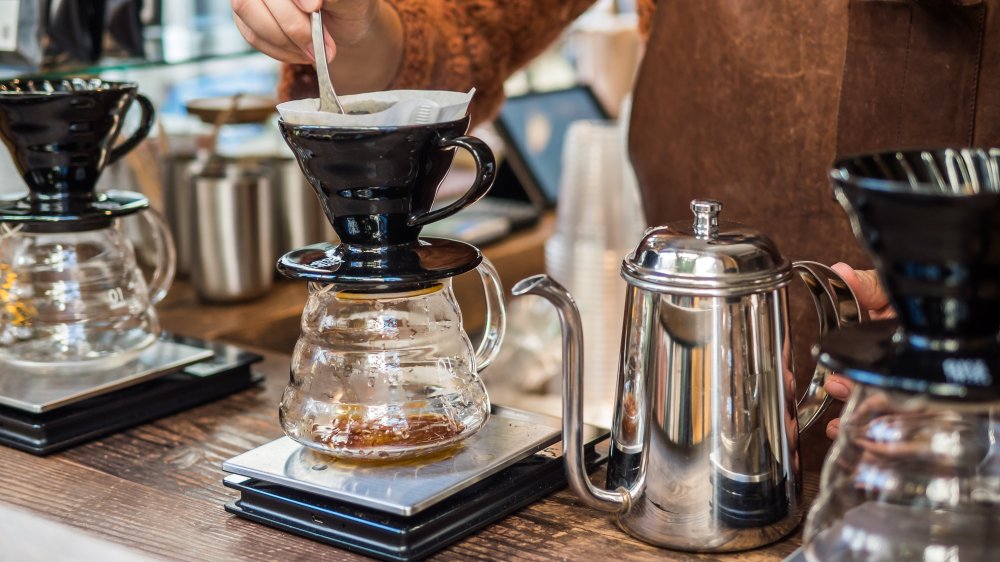You've Been Making Pour-Over Coffee Wrong This Whole Time
For many, coffee is a morning ritual, and starting the day without a cup would be unconscionable. Americans, in particular, love their coffee. In fact, over 50 percent of our population, or roughly 150 million people, drink coffee every day (via E-importz). That's a lot of grounds and hot water. From fancy baristas at Starbucks, who brew up coffee and espresso drinks to order, to Keurig coffee makers who require nothing more than a coffee pod and hot water, the manner in which coffee drinkers prefer their coffee has evolved from decade to decade.
According to Disturb me not, 79 percent of Americans prepare their coffee at home, and one popular method of brewing is the pour-over. Brewing your cup of Joe using the pour-over technique requires a time commitment for which some caffeine lovers simply don't have the patience. Some people even find it pretentious, and perhaps, rightly so. The pour-over coffee brew does require a certain skill and artistry level that can scare off the more timid coffee drinker.
Still, for those who do enjoy the pour-over process and believe it is the only way to achieve a truly rich, flavorful, and aromatic cup of of java, you might be surprised to find you've been making your pour-over coffee all wrong (via Roasty Coffee). Wait. That didn't sound pretentious at all — but seriously, if your pour-over is less than perfect, we can help!
Common mistakes when making pour-over coffee
There are several missteps you might be making when brewing the optimal cup of coffee. The first of which starts with your filter. A pour-over method requires you to pour hot water over coffee grounds in a filter. The most important aspect of the filter is not if it is cloth or paper, but how it fits in the dripper that holds it. If it is too big and bunches up, this will impede the water flow, and the coffee flavor (via Perfect Daily Grind).
The next common mistake happens with your coffee grinds. All coffee grinds are not created equal. It is important that you use the right size so you extract the right amount of flavor from your coffee. Use a ground espresso and you might find the coffee becomes so compact, the hot water gets trapped, and can't make its way through the grounds. This can also lead to what is called over-extraction and results in coffee that is harsh, bitter, and unpleasant to drink. With pour-over, you want your grinds to be medium in size; think the size and coarseness of sand (via Home Grounds).
The right water for a pour-over
Additionally, you might want to review your water pouring technique. Sure, the circular pouring motion lends to the elitist perception of the pour-over, but there's a method to this madness. Your goal is to pour your water so all the flavor from the grounds is extracted evenly. Pouring too much water, too quickly, can lead to a bitter cup of coffee. Use a goose neck kettle if you have one, since it offers more control with pouring. Also, pour just a little water at first, then wait 30 seconds to allow for the bloom stage, or the first saturation of the coffee grinds, so the aromatics and flavors can be released. Then continue pouring (via Java Presse).
And if the size of your coffee grinds, the filter you are using, and your pouring technique are not at fault for a poorly made pour-over, consider trying a different source of water. The Reddit community is adamant that the kind of water you use when making your pour-over really does make a difference. Among their suggestions are using distilled water, or even trying to brew your pour-over with a bottle of mineral water.


